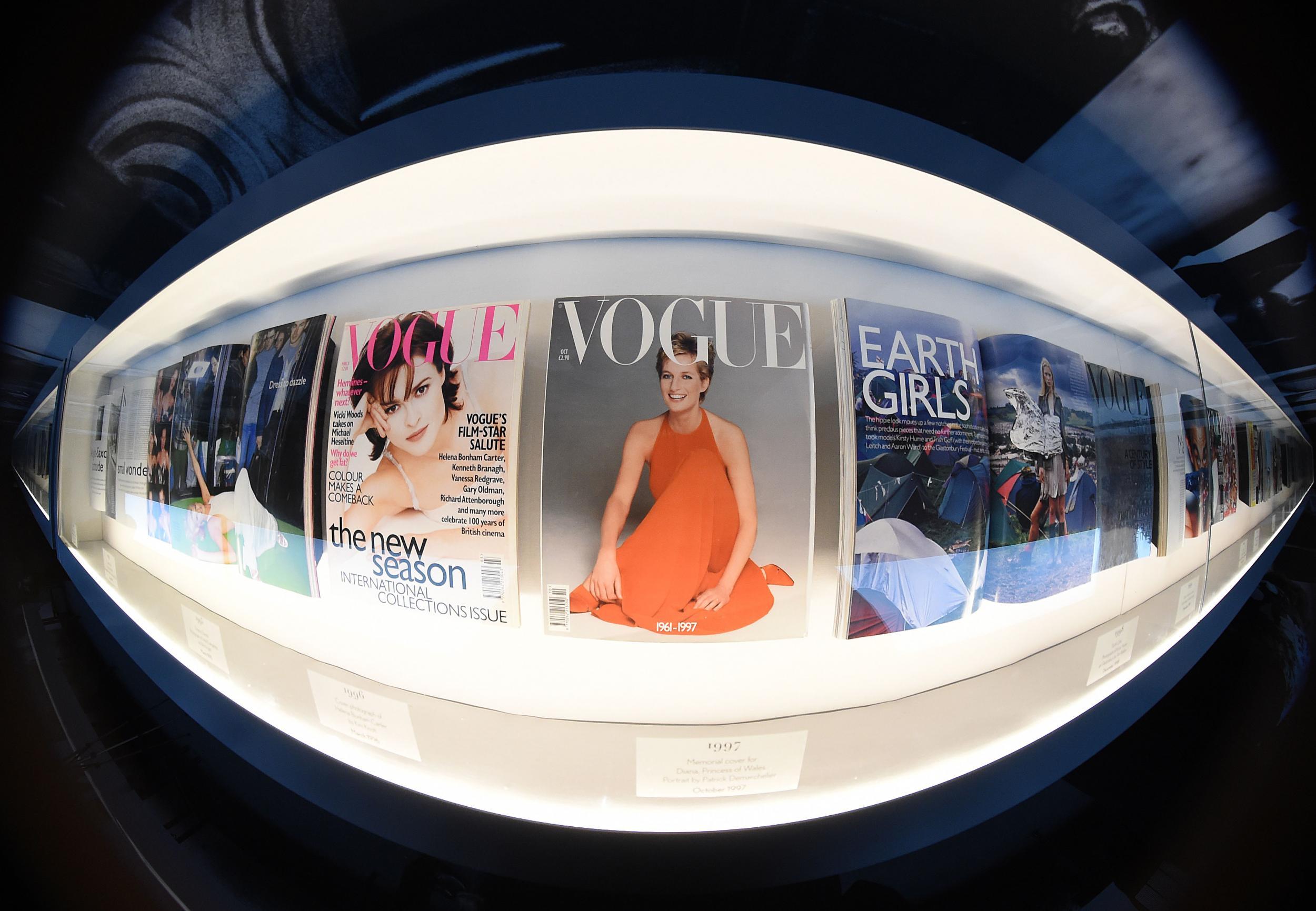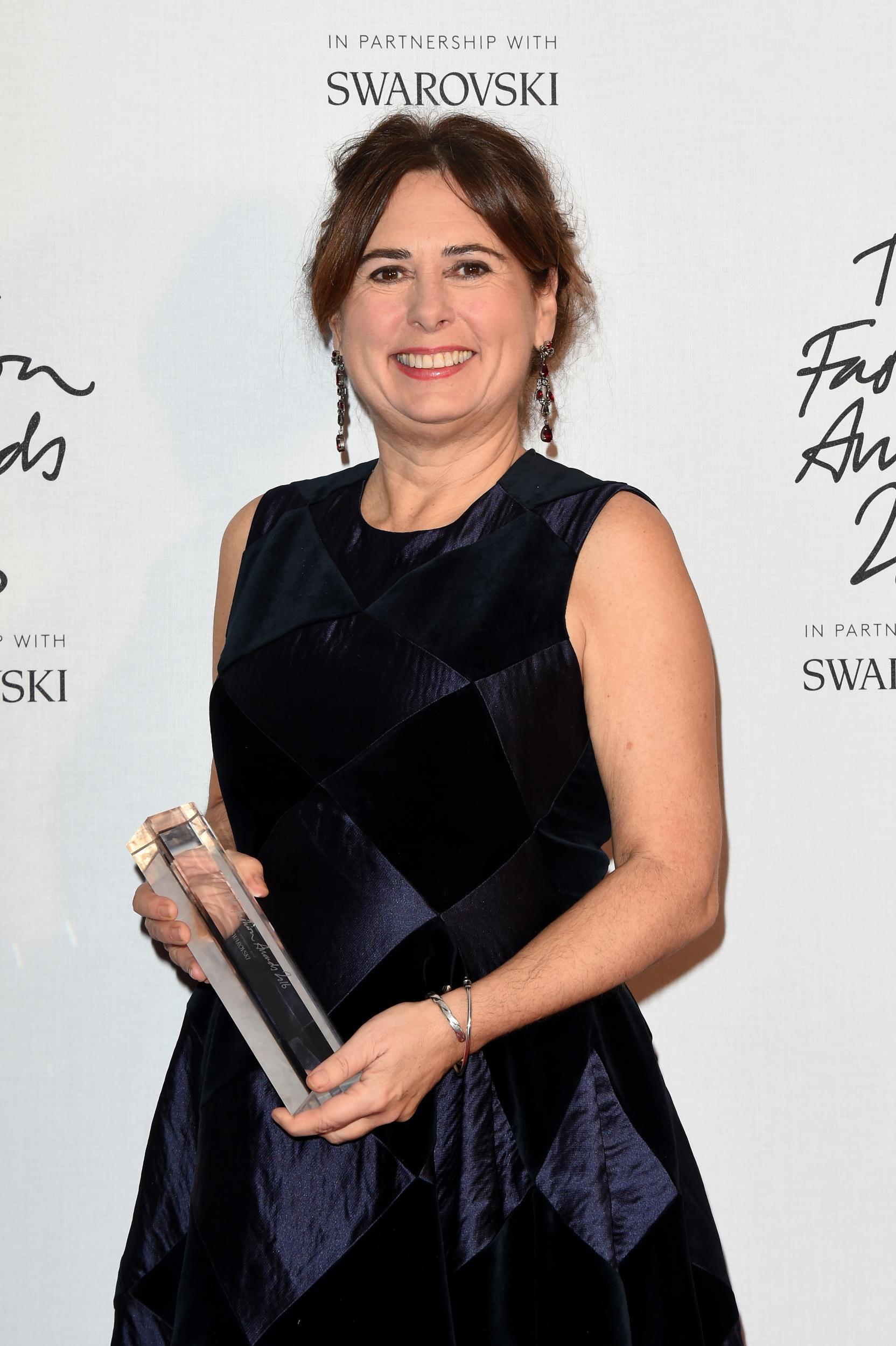The Independent's journalism is supported by our readers. When you purchase through links on our site, we may earn commission.
The new editor of British Vogue must make diversity fashionable
An industry long represented by slender white females aims to make a change in its singular tradition

Your support helps us to tell the story
From reproductive rights to climate change to Big Tech, The Independent is on the ground when the story is developing. Whether it's investigating the financials of Elon Musk's pro-Trump PAC or producing our latest documentary, 'The A Word', which shines a light on the American women fighting for reproductive rights, we know how important it is to parse out the facts from the messaging.
At such a critical moment in US history, we need reporters on the ground. Your donation allows us to keep sending journalists to speak to both sides of the story.
The Independent is trusted by Americans across the entire political spectrum. And unlike many other quality news outlets, we choose not to lock Americans out of our reporting and analysis with paywalls. We believe quality journalism should be available to everyone, paid for by those who can afford it.
Your support makes all the difference.After 25 years at the helm, Alexandra Shulman announced in January that she will be stepping down as editor of fashion bible British Vogue. Her decision prompted mixed reflections on the achievements of the magazine’s longest serving editor. For some, Shulman represented a “real leader” in the fashion industry. Others claimed her tenure will be remembered for its mediocrity.
In Vogue’s official statement, the boss of its publisher, Condé Nast Britain, hailed Shulman as the most successful editor in the magazine’s 100-year history. He added that it was “impossible to sufficiently express the contribution she has made to Vogue, to Condé Nast and to the British fashion industry”.
Fashion and cultural commentators will probably agree that it is impossible to express, or rather measure, her specific contribution. A wide range of external factors – social, economic, political – have transformed the industry in the past two and a half decades. Yet most would agree that both Vogue and Shulman have played an important role in shaping our understanding of fashion, and by extension, our culture and identity.
Shulman began her career in journalism writing for Over-21 magazine, before moving on to Tatler in 1982 and from there to The Sunday Telegraph. Her CV also boasts a two-year stint as editor of GQ magazine before assuming the role of editor-in-chief of British Vogue in 1992. In her autobiographical account of Vogue’s 100th year, Shulman positioned herself as a custodian of the magazine, refusing to claim an authorial role. She wrote: “It’s Vogue’s voice, not mine.”
In contrast to her late father, the journalist Milton Shulman, who reportedly loved having a “soapbox”, Alexandra Shulman never wished for Vogue to serve as a vehicle for her own personality. Such a position perhaps conveniently absolves Shulman of any responsibility for the controversies that have surrounded the publication during her time as editor. That said, she did acknowledge that she gets “a choice in what that voice says”. For some, that voice could have been used more effectively to challenge the institutional racism of the fashion world.
Vogue has long been criticised for failing to represent a diverse population, but in 2013 it was under particular scrutiny. When well-known models Naomi Campbell, Iman and Bethann Hardison wrote an open letter asking for designers to diversify their catwalks, Shulman was forced to respond to the fact that, since August 2002, Vogue had featured white models on all but three of its 146 covers.

Shulman attempted to explain this using market logic. She claimed: In a society where the mass of the consumers are white and where, on the whole, mainstream ideas sell, it’s unlikely there will be a huge rise in the number of leading black models. Such a response reduces Vogue and Shulman’s culpability. Here, the media is a simple reflection of society. Vogue is not racist; it is the product of a racist society.
A model publication?
But this position denies the media’s powerful role in constructing and perpetuating societal norms. Plus, it is a position that Shulman feels able to “opt out” of when it comes to the media representation of fuller figured and ageing women. In the January 2017 issue, Vogue featured model Ashley Graham (British size 16) on the cover. In her editor’s letter, Shulman openly criticised designers who refused to lend clothes for the photo shoot. She wrote: It seems strange to me that while the rest of the world is desperate for fashion to embrace broader definitions of physical beauty, some of our most famous fashion brands appear to be travelling in the opposite – and in my opinion, unwise – direction.
Similarly, she credits herself for introducing the “Ageless Style” issue (typically the bestselling issue of the year) which provides a platform for women of all ages, representing those frequently ignored by the fashion and media industries. And while such an endeavour is admirable, it is difficult to understand how someone who claims impotency when it comes to addressing the racial inequalities in the fashion industry, can simultaneously function as a public champion of ageing and fuller figured women.
When reflecting on Shulman’s legacy and celebrating her achievements, one must also reflect on the work still to be done. Vogue remains a powerhouse in print journalism and has at least an opportunity, if not a responsibility, to represent all communities in society. Shulman’s successor may do well to look to its sister publication, Teen Vogue, whose recent coverage of Black Lives Matter, disability and LGBTQ rights reminds us that fashion is not the exclusive practice of the privileged few.
ecturer in cultural politics, communication and media studies at the University of East Anglia. This article first appeared on The Conversation (theconversation.com)
This article originally said: “Shulman was forced to respond to the fact that, since August 2002, Vogue had featured only white models on its 146 covers.” This has been corrected
Join our commenting forum
Join thought-provoking conversations, follow other Independent readers and see their replies
Comments